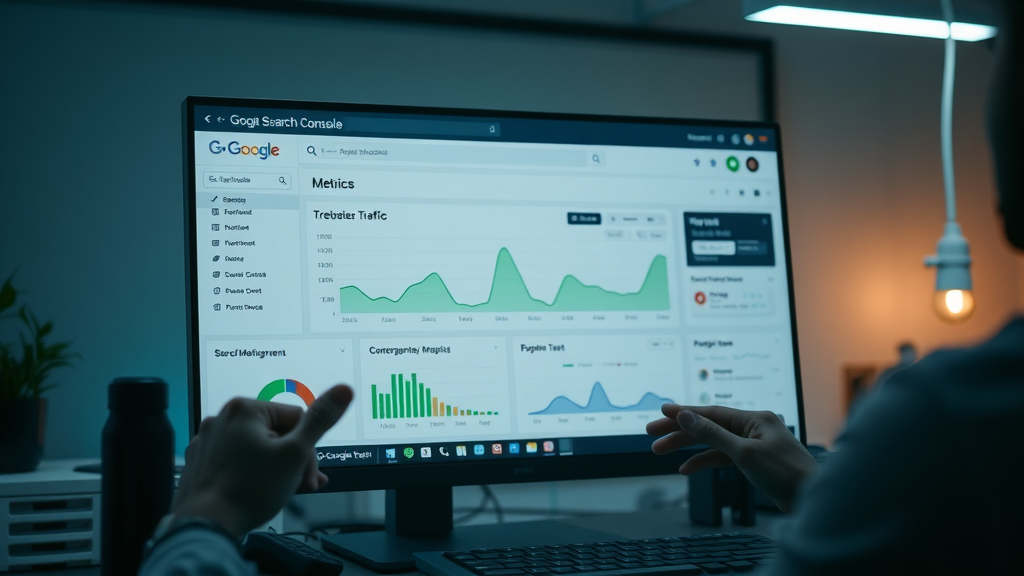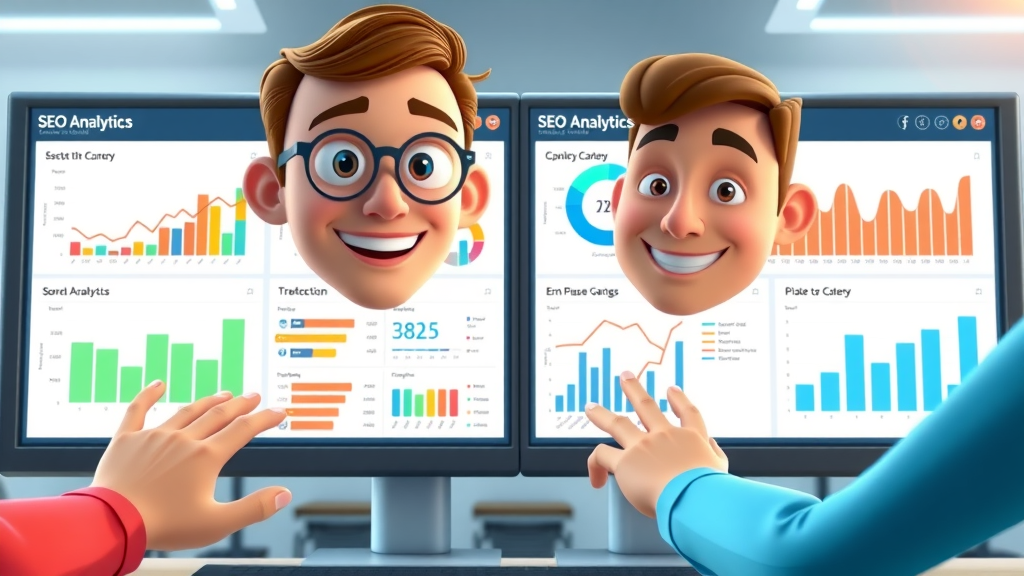Did you know that 46% of all Google searches are for local information ? This startling fact reveals just how much potential local SEO holds for your small business. In a world where digital presence can make or break your business, learning how to harness the power of SEO for small businesses is your shortcut to dominating your local market and leaving the competition in the dust. Ready to discover why mastering business SEO isn’t just smart—it’s essential? Let’s dive in.
Why SEO for Small Businesses is the Ultimate Growth Hack

Many small businesses underestimate the impact that a strategic SEO approach can have on their growth. Local SEO is more than just a buzzword—it’s the foundation that helps business owners get noticed in their communities and beyond. With the right SEO strategy , you won’t just improve your rankings on search engines; you’ll also increase brand awareness, drive more foot traffic, and build lasting relationships with potential customers .
- Did you know that nearly 46% of all Google searches are seeking local information? That’s why effective SEO for small businesses is no longer optional. Learn how your company can achieve sustainable growth and visibility through strategic search engine moves.
Whether you’re hoping to get your coffee shop to appear in nearby search engine results or you want your plumbing business to top the local maps whenever someone searches for “emergency plumber,” SEO for small businesses is your ticket to long-lasting growth. By making your business visible where people are searching, you’re laying the groundwork for higher sales, increased online engagement, and a reputation that outshines even the biggest local brands.
Key Takeaways: What Every Small Business Owner Needs to Win at SEO for Small Businesses
- Understand core SEO for small businesses principles for success
- Apply actionable local SEO techniques
- Master on-page and off-page optimizations
- Learn advanced strategies for long-term growth
Becoming a leader in your niche starts with clear SEO fundamentals. Learn how to make on-page improvements, leverage local SEO, and build credibility through off-page strategies. Don’t just follow best practices—implement them to create an ongoing cycle of visibility, conversions, and revenue for your small business .
Understanding the Basics: What You'll Learn About SEO for Small Businesses

- How SEO for small businesses drives targeted visibility and sales
- The role of local SEO and Google Business Profile
- Step-by-step keyword research for small businesses
- Developing an effective small business SEO strategy
- Monitoring performance with Google Search Console
At its core, SEO for small businesses is about ensuring that your website, content, and business profile appear where your customers are looking. You’ll discover how proper keyword research, on-page best practices, and local search optimization work together to position your business as the go-to provider in your area and industry. Whether you're just launching your digital presence or refining an existing strategy, you’ll gain actionable insights to grow your business from the ground up.
Local SEO, bolstered by a fully optimized Google Business Profile , is a game-changer that every small business owner should leverage. By understanding the basics—like targeting the right search terms and keeping your information consistent across all major platforms—you set yourself up for visibility, authority, and increased conversions from both search engines and real-world customers.
The Impact of SEO for Small Businesses: Uncovering Data-Driven Results

"93% of online experiences begin with a search engine. For small businesses, a robust SEO strategy is fundamental for driving organic traffic and revenue." – Industry Study
SEO’s impact on small businesses goes beyond theory—it’s reflected in real results. Search engine optimization consistently drives organic traffic, delivering opportunities you simply can’t buy with just paid ads. The average small business can multiply its website traffic by five times with effective business SEO methods, whether it’s ranking high on Google Maps or capturing those high-intent searches from nearby prospects.
| Benefit | SEO for Small Businesses | ROI |
|---|---|---|
| Increased Traffic | 5x Potential Growth | High |
| Local Conversions | 3x Higher than Paid Ads | Strong |
| User Trust | Elevated Brand Credibility | Excellent |
By focusing on organic rankings and local search strategies, your small business earns more than just clicks—it wins the trust and patronage of a loyal customer base. These benefits pay out exponentially over time, driving sustainable growth that paid advertising alone can’t match. The data shows: investing in SEO for small businesses is one of the highest ROI moves you can make.
Local SEO for Small Businesses: Get Found Where It Matters Most
Why Local SEO is Critical to Small Businesses
- Appearing in local search engine results
- Optimizing for Google Maps and Google Business Profile
- Leveraging local business listings

Local SEO ensures your business appears in local search engine results right when your nearby customers need you most. When your competitors are still struggling to get noticed, a strong local SEO presence puts you at the top of Google Maps, local business directories, and community search results. This is invaluable for businesses that rely on physical foot traffic or service appointments.
Optimizing your Google Business Profile , using accurate NAP (name, address, phone number) details, and collecting stellar reviews can make all the difference in attracting high-intent traffic. A verified profile not only improves your search engine results placement but also shows customers that you’re active, trustworthy, and truly part of the local ecosystem. Keep your information consistent and up-to-date across all listings to maximize your visibility.
Building and Optimizing Your Google Business Profile
- Step-by-step Google Business Profile setup
- Accuracy and relevance for local search
- Leveraging reviews for local SEO improvement
Setting up your Google Business Profile is the first and most crucial step towards dominating local SEO. Begin by claiming your listing, filling out business categories, service areas, operating hours, and uploading high-quality photos. This information feeds directly into Google Maps and local search engine results, making your business more prominent to those searching for services you offer.
To get the most out of your profile, solicit reviews from satisfied customers and respond to feedback promptly. Not only do reviews influence customer decisions, but they also signal authority to search engines. Consistency is key—make sure that your business information is identical on your website, social media, and all other platforms, as discrepancies can hurt your rankings and trustworthiness.
Establishing a Strong Small Business SEO Foundation
On-Page SEO for Small Businesses: Content and Optimization
- Developing quality content targeting local and industry-specific keywords
- Proper meta descriptions, title tags, headers
- Mobile optimization and fast loading times

On-page SEO is about optimizing each element of your website, from meta descriptions and title tags to headers and keyword-rich content. Every page should serve a unique purpose, addressing specific search intent and delivering value to your target audience. Integrate local keywords naturally into your copy, and make sure your headings and tags are compelling yet informative. Use quality content—think blog articles, product descriptions, and landing pages—to establish authority in your field.
Don’t overlook technical basics: your website must load quickly and look great on all devices. Mobile optimization and responsive design are non-negotiable, as an increasing number of potential customers browse from smartphones or tablets. Enhance user experience with fast navigation, accessible menus, and intuitive site structure, ensuring both visitors and search engines can easily access all your offerings.
Off-Page SEO for Small Businesses: Earning Trust Beyond Your Website
- Building authoritative backlinks
- Local citations and directory submissions
- Leveraging partnerships for business SEO credibility
While your website is the main stage, off-page SEO is what builds your reputation and authority across the web. Achieve this by earning backlinks from reputable sources, participating in industry-related discussions, and submitting your business to relevant local directories. Local citations—mentions of your business name and info on trusted sites—can vastly improve your credibility in local search.
Strategic partnerships, sponsorships, or community involvement often lead to valuable mentions in blogs, news sites, and local media, amplifying your search engine visibility. Remember: quality always trumps quantity when building links. Prioritize earning a few high-authority, relevant backlinks over a glut of low-value sources.
Keyword Research for Small Businesses: Finding Profitable Opportunities

Using Search Engine Tools for Effective Keyword Research
- Top keyword research tools for small business SEO
- Analyzing search engine data to target intent-driven queries
Keyword research forms the backbone of every successful small business SEO campaign. Begin with tools like Google Keyword Planner, Ahrefs, and SEMrush to uncover high-intent, low-competition phrases relevant to your market. Focus on search engine data that reflect what your local audience is actually looking for—frequently used queries, question keywords, and location-based searches are prime examples.
Analyze search volume, competitive density, and intent behind each keyword. A winning approach balances short, popular keywords with longer, buyer-intent search terms—for instance, “bakery near me open late” or “affordable AC repair in [city].” Regularly update your keyword plan as trends shift, and incorporate local modifiers to outpace your competitors in every relevant engine result.
| Tool | Features | Best For |
|---|---|---|
| Google Keyword Planner | Free keyword idea generation | Beginners |
| Ahrefs | Competitor & gap analysis | Intermediate |
| SEMrush | Local SEO tracking, suggestions | Advanced |
Crafting a Winning SEO Strategy for Small Businesses

Step-by-Step SEO Strategy Development for Small Business Owners
- Setting clear SEO goals aligned with business objectives
- Auditing current website SEO
- Creating a content calendar for persistent growth
Success in business SEO starts with intentional, measurable goals. Define clear objectives—such as boosting local rankings, increasing organic search traffic, or improving conversions through better landing pages. Conduct an audit of your current presence using search engine tools, reviewing everything from on-page optimization and content quality to backlinks and mobile usability.
Next, create a robust content calendar featuring blog posts, case studies, location pages, and regular updates to your Google Business Profile. Each piece should target a specific keyword and search intent, helping you build topical authority and relevance over time. The result? An agile, adaptive plan that keeps your small business SEO efforts ahead of the competition.
Advanced Tactics in SEO for Small Businesses: Outrank the Competition
Leveraging Google Search Console and Search Engine Analytics
- Tracking rankings and traffic
- Diagnosing technical SEO issues using Google Search Console

Once the SEO basics are in place, it’s time to elevate your strategies using Google Search Console and analytics. These tools empower you to monitor organic search performance, uncover which keywords are driving traffic, and identify where users might be dropping off your website. Regular analysis allows you to make data-driven adjustments that maximize rankings and conversions.
Spotting and fixing technical SEO issues—like broken links, crawl errors, or duplicate content—is essential for maintaining your edge in search engines. Use these platforms to generate regular reports, track progress toward your KPIs, and stay alert to changes in search engine results that might affect your SEO strategy . The best-performing small businesses are those that act quickly on the insights provided by these analytics.
Harnessing the Power of Local Link Building for Small Businesses
- Effective local link acquisition strategies
- Community involvement and local press mentions
Local link building is an advanced but highly rewarding tactic for boosting small business SEO . Collaborate with neighboring businesses, participate in local community events, and reach out to local news publishers or bloggers for features and press coverage. Every credible local backlink sends strong trust signals to search engines while reinforcing your presence in the local search ecosystem.
Go beyond digital outreach—sponsor a community event, host a workshop, or get involved in charity. These activities often result in high-quality backlinks and media mentions, further elevating your authority and relevance in search engine results. The more diverse and localized your backlink profile, the more effectively you’ll outrank competitors in your area.
Boosting Local Search and Small Business SEO with Quality Content
Creating Engaging, Informative Content for Search Engines and People
- Types of content that attract local search traffic
- Utilizing blog posts, case studies, and location pages effectively
- Ensuring every piece delivers value to both users and search engines

Delivering high-value, locally targeted quality content is one of the most effective ways to rise in local search rankings. Focus on helpful blog posts that answer common customer questions, detailed case studies highlighting your successes, and well-optimized location pages with up-to-date information about your services. Every article and webpage is an opportunity to offer genuine value while signaling relevance to search engines.
Ensure your content incorporates local keywords, meaningful reviews, and data-driven case studies that address the unique challenges of your market. Consistency matters: frequently updated, varied content tells search engines that your business is active and relevant—keeping you visible at the top of local search engine results for years to come.
Essential SEO Tools for Small Businesses
- Google Search Console
- Google Analytics
- Moz Local
- SEMrush
- Ahrefs

Modern SEO for small businesses requires a toolkit for tracking success and revealing new opportunities. Google Search Console and Analytics are must-haves for monitoring site performance, identifying traffic sources, and resolving technical issues. Moz Local simplifies local citation management, SEMrush and Ahrefs help uncover competitor data, target new keywords, and back up your decisions with powerful analytics.
Leverage these tools to audit your business profile, track the success of your strategies, and gather performance insights that inform your next steps. Making data-backed decisions takes the guesswork out of SEO, helping you fine-tune content and campaigns for the best possible return on investment.
How to Monitor and Refine Your Small Business SEO Efforts
Tracking Metrics That Matter for Small Businesses
- Traffic, rankings, conversions, and phone calls
- Utilizing dashboards to streamline reporting

It’s not enough to launch an SEO campaign—you must also monitor the metrics that matter. Focus on website traffic, keyword rankings, conversion rates, and even call volume for businesses with phone-based leads. Regularly review your dashboards in Google Analytics and Search Console; look for patterns or sudden drops, and always be on the lookout for new opportunities to optimize.
Turn data into action. If your rankings for key terms stall, investigate and adjust your content or backlinks. If a new service page is performing well, build more supporting content to capture additional search engine results. Streamlining your reporting processes not only saves hours every month, but also keeps your team accountable and proactive in building long-term success.
Continuous Improvement: Keeping Up With Search Engine Changes
- Staying informed about search engine algorithm updates
- Enhancing business SEO through ongoing education and testing
Search engines constantly evolve their algorithms, which means your SEO tactics must evolve, too. Stay up-to-date with reputable SEO blogs, attend webinars, and participate in online communities focused on local and small business SEO . Don’t be afraid to experiment—A/B test new features, try different types of content, and monitor the search engine results for your niche frequently.
The best way to master SEO for small businesses is through continuous learning and refinement. Encourage your team to share insights, review competitors regularly, and always remain agile. The businesses that win are those that adapt quickest to the latest changes in the search landscape.
Case Studies: SEO Success Stories from Real Small Businesses
"Implementing local SEO strategies doubled my bookings in under 6 months." – Local Business Owner
"Our Google Business Profile became our primary source of new customers." – Family-Owned Shop
Real-world stories underline the game-changing value of SEO for small businesses. By optimizing their Google Business Profile, targeting local keywords, and staying engaged in community efforts, business owners have transformed online visibility into new customers, increased sales, and stronger, more resilient brands. These results are possible for any determined entrepreneur willing to invest in smart SEO strategies.
Actionable Checklist for Small Business SEO Success
- Set up and verify your Google Business Profile
- Optimize every web page for target search engine keywords
- Gain reviews and local citations
- Create and distribute quality content
- Build relevant, authoritative backlinks
- Monitor with Google Search Console weekly
Follow this checklist to cover every aspect of small business SEO , from foundational work to advanced growth techniques. Consistency in each step is the key to moving the needle on your digital marketing goals.
Expert Insights: Top Quotes from the Field on SEO for Small Businesses
"Small businesses thrive when they focus on local SEO and deliver consistent, relevant content." – SEO Expert
Industry experts agree: the businesses that win today are those that combine strong local SEO, persistent content creation, and careful attention to technical and off-page strategies. Seek out real insights from other business owners, and put their advice into action.
Most Common SEO for Small Businesses Mistakes and How to Avoid Them
- Neglecting mobile-friendly website design
- Ignoring business profile optimization
- Not targeting local search engine queries
- Overlooking backlink quality
Even seasoned entrepreneurs can stumble with small business SEO . Ensure your website is fully mobile-optimized to serve all users and avoid losing valuable traffic. Always keep your business profiles current on every platform—outdated information can cost you both ranking and trust. Never ignore local search engine queries; they’re the shortest route from discovery to conversion. And finally, invest in high-quality backlinks—cheap links or black-hat tactics can do more harm than good in the long run.
People Also Ask: Does SEO really work for small businesses?
Comprehensive Evidence That SEO for Small Businesses Delivers Results
- SEO for small businesses consistently increases web visibility, leads, and sales across competitive markets. Research shows that businesses with active SEO campaigns grow quicker and sustain higher customer engagement.
Yes, SEO absolutely works for small businesses . From more eyes on your products to steady sales growth, the evidence is overwhelming: engine optimization pays major dividends for those willing to learn and implement best practices.
People Also Ask: How much should SEO cost for a small business?
Assessing the Average Investment for Effective Small Business SEO
- Most small businesses spend between $500-$2,000 per month for comprehensive SEO for small businesses, but the investment directly relates to competitiveness and goals.
In most markets, quality small business SEO can be managed for $500-$2,000 per month based on the complexity, competition, and goals of your business. It's an investment that typically pays off with increased organic search traffic and customer loyalty.
People Also Ask: What are the 3 C's of SEO?
Defining the Core Pillars for Small Business SEO Success
- Content: Deliver quality content targeting user intent
- Code: Ensure the technical foundation supports search engine optimization
- Credibility: Earn trust signals with quality backlinks and reviews
For sustainable success, focus on these 3 C's: Consistently producing meaningful content, keeping your site’s code technically sound, and earning credibility through genuine reviews and local backlinks.
People Also Ask: What are the 4 types of SEO?
A Quick Guide to the Four Essential Types of SEO for Small Businesses
- On-Page SEO: Optimizing website content and structure
- Off-Page SEO: Building authoritative links and citations
- Technical SEO: Ensuring accessibility and indexability by search engines
- Local SEO: Focusing on relevance for location-based search engine results
Every comprehensive SEO plan should include on-page, off-page, technical, and local SEO. Together, these four pillars create the complete foundation required to help your small business win in search results.
Frequently Asked Questions: SEO for Small Businesses
- How long does it take for SEO for small businesses to show results? Most small businesses will start seeing tangible improvements in rankings and traffic within three to six months of consistent SEO work, with compounding benefits over time.
- What is the best SEO strategy for small businesses with limited resources? Focus on local SEO first, optimize your Google Business Profile, and produce value-driven content targeting your most profitable keywords.
- Is DIY SEO for small businesses effective? Yes, many entrepreneurs have achieved great results with free SEO tools, educational resources, and a consistent approach to on-page and local SEO basics.
- How do reviews and ratings impact SEO for small businesses? Reviews and ratings help elevate local trust and authority, and are a direct ranking factor for local pack and map results.
- Can a small business compete with large brands using SEO? Absolutely—with the right focus on local search, niche keyword targeting, and quality content, small businesses can rival (and often outrank) larger competitors in their local markets.
Final Steps to Master SEO for Small Businesses and Crush Your Competitors
- Stay consistent in your small business SEO efforts
- Regularly review business profile information and local citations
- Expand quality content with a focus on your unique audience
- Monitor search engine trends to stay ahead of local competitors
Maintain momentum by refining your SEO strategy, investing in skill-building, and never stopping your pursuit of digital excellence.
Take the First Step: Dominate Your Local Market with SEO for Small Businesses
- Implement the strategies outlined above
- Start tracking your progress with search engine analytics tools and Google Search Console today
- Elevate your small business’s online presence—and get ready to outrank your competitors!
Take action now: transform your small business’s future with a proven, sustainable SEO plan and capture success in your local market!
To further enhance your understanding of SEO for small businesses, consider exploring the following resources:
- “Top SEO Tips for Small Businesses to Grow Your Website” ( web.com )
This guide offers actionable strategies to boost your website’s visibility, including setting up Google Analytics and Google Search Console, optimizing your Google Business Profile, and conducting thorough keyword research.
- “8 SEO Tips for Small Businesses” ( builtin.com )
This article emphasizes the importance of quality content, optimizing site architecture, and claiming your business listings to improve your search engine rankings.
By delving into these resources, you’ll gain practical insights and techniques to effectively implement SEO strategies tailored for small businesses.
 Add Row
Add Row  Add
Add 




Write A Comment